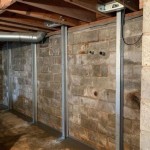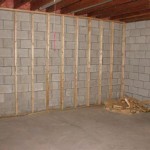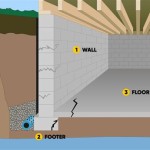How To Seal Cracks In Basement Walls
Basement walls are susceptible to cracking due to various factors such as hydrostatic pressure, ground movement, and structural issues. If left unsealed, these cracks can lead to moisture渗透, structural damage, and mold growth. Sealing basement wall cracks is crucial for maintaining a dry, healthy, and safe basement environment.
There are several methods to seal cracks in basement walls, including epoxy injection, hydraulic cement, and urethane sealants. The choice of method depends on the size, location, and severity of the crack.
Epoxy Injection
Epoxy injection is a permanent and effective method for sealing cracks wider than 1/16 inch. A two-part epoxy resin is injected into the crack under pressure, filling and bonding the crack from the inside. Epoxy injection is typically performed by professional contractors and requires specialized equipment.
Hydraulic Cement
Hydraulic cement is a fast-setting, expansive cement that is used to seal cracks up to 1/4 inch wide. It is mixed with water and applied to the crack, where it expands and hardens to form a watertight seal. Hydraulic cement is a readily available and cost-effective option for DIY repairs.
Urethane Sealants
Urethane sealants are flexible, waterproof sealants that are applied to the surface of the crack. They are available in a variety of colors to match the basement wall and can be applied with a caulk gun. Urethane sealants are suitable for sealing hairline cracks and minor seepage.
Step-by-Step Guide to Sealing Cracks in Basement Walls
1. Identify and Clean the Crack: Locate the crack and clean it thoroughly with a wire brush or stiff broom to remove dirt, debris, and loose material.
2. Prepare the Crack: If the crack is wider than 1/4 inch, use a grinder or chisel to widen it slightly and create a "V" shape. This will allow the sealant to penetrate deeper into the crack.
3. Apply the Sealant: Choose the appropriate sealant based on the size and severity of the crack. Follow the manufacturer's instructions for mixing and applying the sealant.
4. Smooth and Finish: Use a putty knife or trowel to smooth the sealant and remove excess material. Allow the sealant to cure according to the manufacturer's instructions.
5. Monitor and Maintain: Inspect the sealed crack regularly for any signs of leaking or deterioration. If necessary, re-seal the crack or contact a professional for further assistance.

How To Repair A Large Basement Wall Crack Stop Leaking Permanently

How To Repair A Large Basement Wall Crack Stop Leaking Permanently

Foundation Crack Repair Company St Louis

Diy Foundation Crack Repair Kit Urethane Radonseal

Acculift Foundation Repair St Louis Top Rated Basement Crack Services

Using Foundation Crack Iection To Repair Basement Walls

How To Seal Basement Cracks

Diy Foundation Crack Repair Kit Urethane Radonseal

Diy Foundation Crack Repair Kit

Basement Wall Crack Repair How To Fix Leaks A Step By Guide Youtube
See Also








